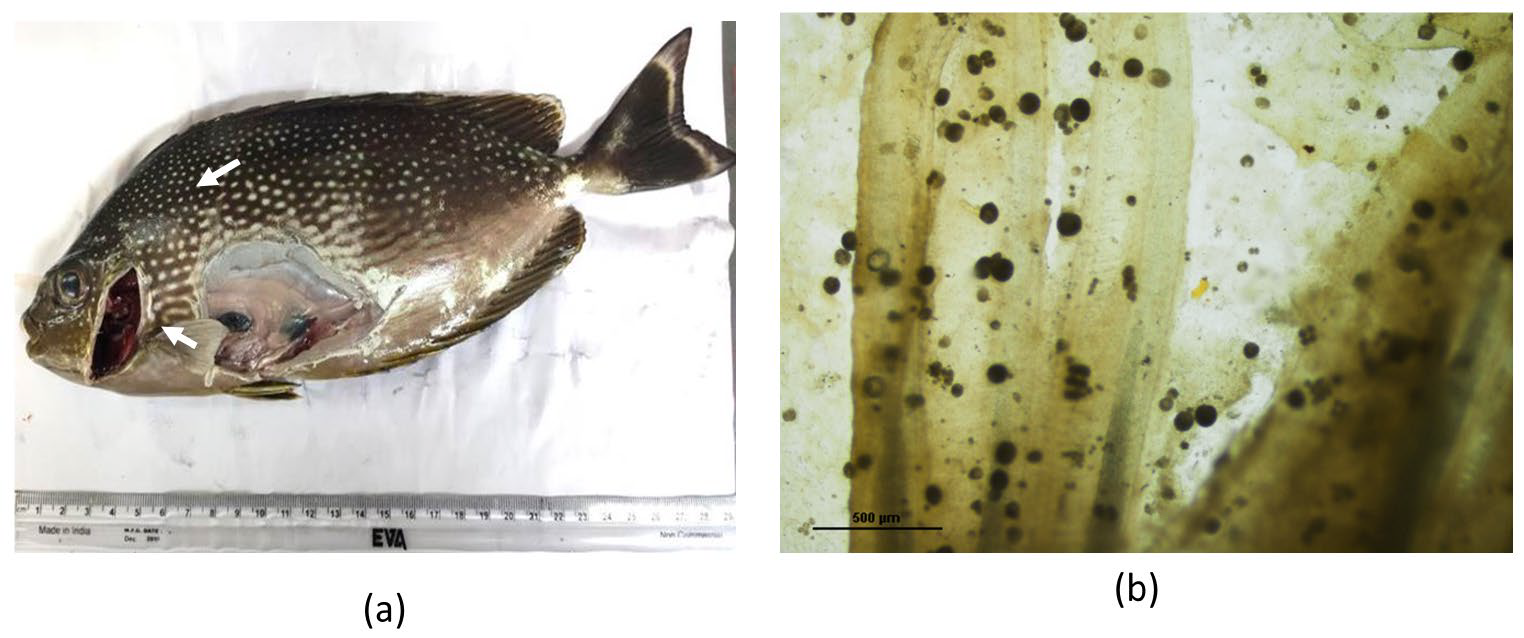Abstract
Fish trade and aquaculture activities are considered the major causes of fish and shellfish disease spread and transfer. An outbreak of infectious nature in captive stock of Java rabbitfish (Siganus javus) in brackish water tanks was investigated. Microscopic examination revealed different stages of the parasitic dinoflagellate Amyloodinium in the gill filaments of moribund fish. Histopathological studies confirmed severe infestation with gill erosion and lamellar fusion. The geographical lineage of the isolate was determined through partial sequencing of the 18S ribosomal RNA gene. BLAST analysis of the 18SrRNA gene sequence determined the 100% identity to Amyloodinium ocellatum and clustered with other isolates reported from Italy, Israel, the United States, Portugal, and Japan in the phylogenetic tree. The salinity requirement of the isolate was assessed by incubating tomont stages at salinities ranging from 0 to 30 ‰. Salinities below 5 ‰ were shown to inactivate and degrade 90% of the tomonts within 14 days of incubation, whereas salinities above 10 ‰ supported the parasite life cycle and its development. Further, the susceptibility of Asian seabass (Lates calcarifer) to A. ocellatum was elucidated in a challenge study. The current study demonstrated the potential threat of parasitic translocation with fish movement, the salinity regimes for their development, molecular detection including its impact on other cultivable fish species.
